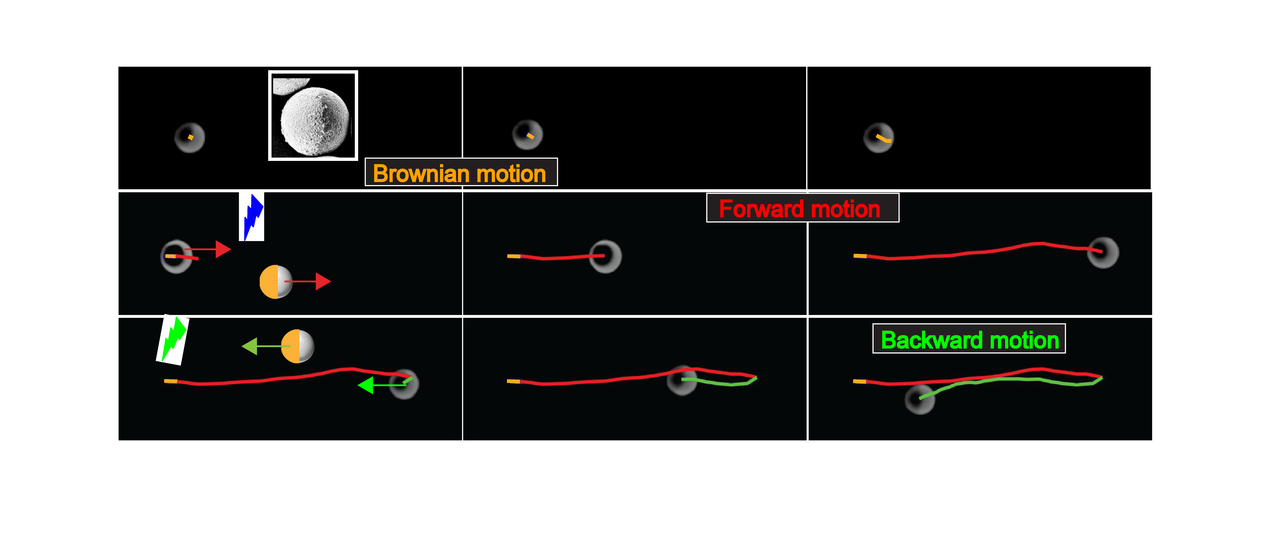Wittingly and unwittingly, we all encounter the beautiful collective motion of living or active matter systems in our daily life, e.g., flocks of birds, schools of fish, and colonies of bacteria. Unravelling, predicting, and controlling such collective phenomena is a major challenge and requires insights and concepts from biology, chemistry, engineering, and physics. One of the prominent questions in these systems is when and how the collective motion starts to emerge from the dynamics of the individual entities. Moreover, active systems present us with exciting possibilities for the design of novel materials and devices, yet they also introduce scientific and technological challenges. Designing simple synthetic active model systems such as self-propelled particles (SPPs) or artificial microswimmers is currently a topic of substantial interest in the active soft matter for a variety of reasons. The collective motion of such SPPs bears a striking resemblance to their more complex natural counterparts. Hence, they can be used as model systems to study intrinsically out-of-equilibrium behaviour as they display rich collective phenomena such as active clustering, segregation, and anomalous density fluctuations.
Several experimental studies have been reported on the fabrication of synthetic active systems, invoking and using different swimming strategies1-2. One class consists of SPPs, of which Janus particles are an example, induces motion by converting chemical energy to their own motion on one side of the particle from its local environment1-3. In these synthetic systems, rotational diffusion of the particle randomizes the propulsion direction, but its directionality, i.e. the velocity vector with respect to the metal-coated hemisphere, remains constant. As described in our paper, by exploiting different photocatalytic activities on the different sides of half-gold coated anatase Titania particles, we can reverse the propulsion direction on demand4. Control over the surface chemistry enables a rapid reversal of propulsion direction using distinct wavelengths of light. Now the direction of motion entirely depends on the wavelength of the incident light (see Movie1). Strikingly, the trajectories of our direction reversible particles resemble the motion of run-and-reverse behaviour of several marine microorganisms, e.g., Myxococcus xanthus, Pseudoalteromonas haloplankti, and Vibrio alginolyticus.

Movie1. Time-lapsed overlaid bright-field microscopy movie shows the propulsion direction switchable half-gold coated anatase Titania particle by light modulation. Active particle shows forward motion in the direction of Titania side under the UV illumination, whereas the particle shows backward motion in the direction of gold-coated side under the green light illumination. The propulsion direction reversing is achieved by switching light illumination from UV to green, and vice-versa. The brightness and contrast are adjusted using ImageJ. The movie is accelerated 2X.
Controlling and switching the nature of interactions (e.g., attractive to repulsive and vice versa) between individual units without changing the chemistry of starting building blocks is a major challenge in soft condensed matter. In this work, we use a simple approach to reverse the nature of the interaction between the SPP’s by exploiting the disturbance hydrodynamic flow fields around the self-propelled particles (see Movie2).

Movie2. This movie demonstrates the switchable nature of interactions between the active and passive particles from repulsive to attractive by light modulation. The dynamic response of passive particles to the disturbance velocity flow fields driven by immobilized active particle. The movie is accelerated 3X.
We demonstrate the particle assemblies to undergo both fusion and fission transitions (see Movie3), depending on their relative orientation and the colour of illuminating light. Moreover, the SPPs can act as nucleation sites, and switch the interactions between active and passive particles rapidly, leading to reconfigurable assembly and disassembly. Finally, we are able to qualitatively explain the experimental results using a simple hydrodynamic scaling.

Movie3. Fusion and fission dynamics of switchable photoresponsive colloids. Fusion: Time-evolution and dynamic growth show the fusion of the active particles into a single cluster. Fission: Time-evolution of the fission dynamics shows the big cluster under the UV illumination. This single cluster explodes into small clusters when the direction of propulsion of the particle is reversed. Small clusters dissolve when the illumination switches to green light.
We believe that our system paves a new way to realize fast switching between nature of interactions from attractive to repulsive and back, enabling the design of reconfigurable materials by sculpting them from within. Moreover, our study could open new possibilities to drive the arrested systems (e.g. gels, and glasses) by “stirring with light”.
Link to the manuscript: https://doi.org/10.1038/s41467-020-15764-1
The work described in Nature Communications is a part of my individual Marie Skłodowska-Curie Research Fellowship to develop biomimetic systems to better understanding the collective behaviour of active systems which are found abundantly in nature. Without a fruitful collaboration with the co-authors, this work may not be completed.
References:
1. C. Bechinger, et al., Rev. Mod. Phys. 88, 045006 (2016).
2. J. Zhang, E. Luijten, B. A. Grzybowski, S. Granick, Chem. Soc. Reviews 46, 5551 (2017).
3. H.R.Vutukuri, et al. Sculpting vesicles with active particles: Less is more,
4. H.R.Vutukuri, et al. Nat. Communi. 11, 2628 (2020).







Please sign in or register for FREE
If you are a registered user on Research Communities by Springer Nature, please sign in